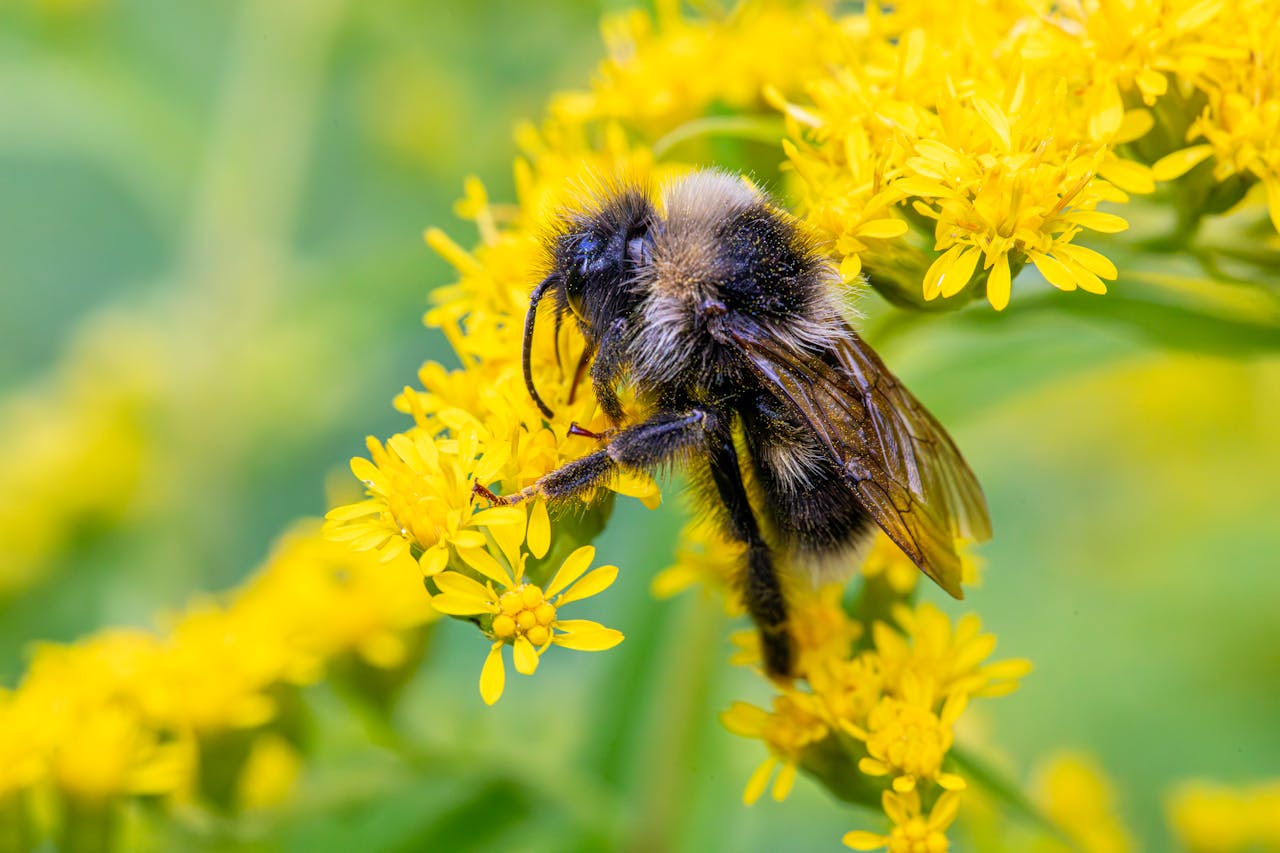In the heart of the United Kingdom, a quiet revolution is taking place. Homeowners, gardeners and lovers of the great outdoors are turning their spaces into havens for nature, and in particular, for a very special group of insects – the bees. Bees are essential pollinators, responsible for the propagation of many of our favourite plants and flowers, and unfortunately, they’re under threat. But, fear not. You can help. This guide will equip you with the knowledge and tips you need to create a lush, bee-friendly garden, right on your doorstep.
Why Bees Matter in Your Garden
Understanding the valuable role bees play in our ecosystem is key. They are the most effective pollinators we have. They transfer pollen from male to female parts of flowers, fertilising them in the process and enabling them to produce fruit and seeds. Without bees, many of our favourite fruits, vegetables, and flowers would cease to exist.
Cela peut vous intéresser : How to Choose the Right Type of Mulch for Your UK Garden Beds?
In the UK, there are approximately 270 species of bees, including bumblebees, honeybees and solitary bees. Each of these species has unique needs and preferences, making a diverse garden essential for supporting a broad range of bees.
Choosing Bee-Friendly Plants
One of the best ways to attract bees to your garden is by planting a variety of nectar-rich flowers and plants. Bees are particularly drawn to bright, fragrant flowers that are simple in shape, as they can easily access the nectar and pollen.
En parallèle : What Are the Most Effective Organic Fertilizers for UK Vegetable Gardens?
Early spring is a challenging time for bees, as food can be scarce following the winter months. Therefore, it’s advantageous to include early-flowering plants like crocuses, primroses, and snowdrops in your garden. These flowers will provide a vital source of nectar and pollen to bees emerging from hibernation.
In contrast, during the summer, plants such as lavender, foxgloves, and cosmos are excellent choices. These sun-loving plants provide a continuous source of food for bees throughout the warmer months.
Lastly, don’t forget about the winter. Ivy is a valuable source of food in the colder months when other options are limited. It flowers late, providing nectar and pollen for bees preparing for hibernation.
Providing Water and Shelter for Bees
Just like any other creature, bees need a source of clean, fresh water. A shallow dish or bird bath with a few stones or marbles in it for the bees to land on will suffice. Remember to refill it regularly, especially during dry periods.
Providing shelter for bees is equally important. Bees need a safe place to nest and overwinter. Bumblebees often nest in the ground, so areas of undisturbed habitat, like compost heaps or under sheds, can offer an ideal home.
Alternatively, you can buy or build a bee hotel. These structures, filled with tubes or drilled holes, offer a place for solitary bees to nest. By placing a bee hotel in your garden, you’ll provide a safe nesting ground for these beneficial insects.
Avoiding Pesticides in Your Garden
Pesticides, while often used to keep garden pests at bay, can be detrimental to bees. Instead, consider using organic methods of pest control. Encouraging other insects and birds into your garden can help keep pest populations under control, as they act as natural predators.
If you need to use a pesticide, try to use it sparingly and not when plants are in flower. Always read and follow the instructions, and consider using less harmful alternatives where possible.
Creating a Year-Round Bee-Friendly Garden
Establishing a garden that offers year-round support for bees requires some planning. Providing a succession of flowering plants from early spring through to late autumn ensures a continual food supply.
Remember, variety is the spice of life. A diverse mix of plants and flowers helps cater to the different species of bees. Planting in clusters also helps bees find the plants.
Remember to leave some areas of your garden a little wild, as some bees prefer to nest in undisturbed spots.
By following these steps, your garden can become a haven for bees, helping to support their vital work and ensuring the beauty of UK gardens for generations to come.
Making Your Garden a Sanctuary for Solitary Bees
The act of turning your garden into a hive of activity for solitary bees, such as the leafcutter bee or the mining bee, is a rewarding endeavour. While not as well-known as their bumblebee and honeybee cousins, solitary bees still play a vital role in pollination and they need our support.
Solitary bees, as their name suggests, live and breed alone unlike social bees that live in colonies. They can be amazingly productive pollinators because they tend to carry pollen on their belly, allowing for more effective transfer as they move from flower to flower. They are also less aggressive than other bee species, making them ideal garden guests.
To attract these bees to your garden, plant a range of bee-friendly flowers and shrubs that bloom at different times throughout the year. This ensures a steady food source for these hardworking insects. Flowers like sunflowers, poppies, and heather are particularly appealing to solitary bees due to their rich nectar and pollen supply.
You can also encourage solitary bees to make a home in your garden by providing suitable nesting sites. Many solitary bees like to nest in small cavities. You can create these by leaving a patch of bare earth for ground-nesting species or by setting up a bee hotel. Remember, a bee-friendly garden must cater to the needs of various types of bees.
Educating Others About Creating Bee-Friendly Garden
Creating a bee-friendly environment in your garden is not only beneficial for the bees but also for the entire ecosystem. As excellent pollinators, bees play a critical role in maintaining the balance of nature in your garden, and their presence is a sign of a healthy environment.
However, the plight of bees is not well-known to everyone. As part of your efforts to support these vital insects, consider educating others about the importance of bees and how to create a bee-friendly garden. Share the knowledge you have gained, encourage your neighbours and local community to create their own bee havens and together, you can make a significant difference in the lives of bees.
Remember, each bee-friendly garden is a step towards supporting the survival of bees. Your efforts can inspire others to follow suit, and collectively, we can help to maintain the balance of our ecosystem.
Conclusion
Creating a bee-friendly garden is not just about planting the right flowers or setting up a bee hotel. It goes beyond that. It’s about recognising the crucial role that bees play in our ecosystem and taking steps to support them. It’s about cultivating a garden that not only brings joy to you but also offers a refuge for these industrious creatures.
Remember, your garden is not just your own. It can also be a sanctuary for bees, a place where they can thrive and continue their vital work. By creating a bee-friendly garden, you are playing your part in preserving these essential pollinators and ensuring the continued beauty and productivity of gardens across the UK. So, make the change today, and let your garden buzz with life.






